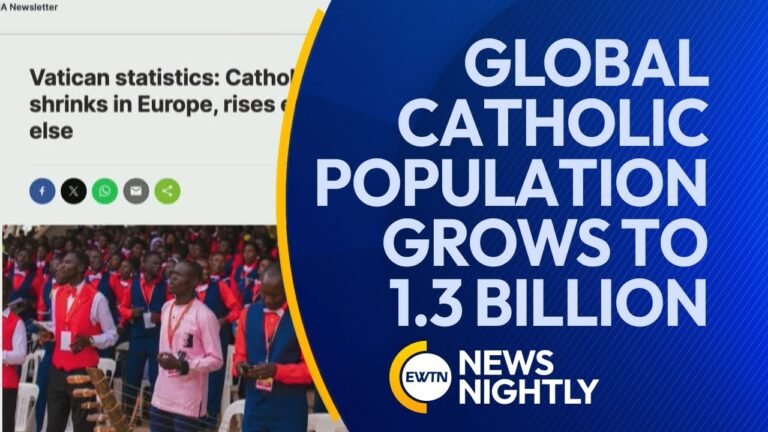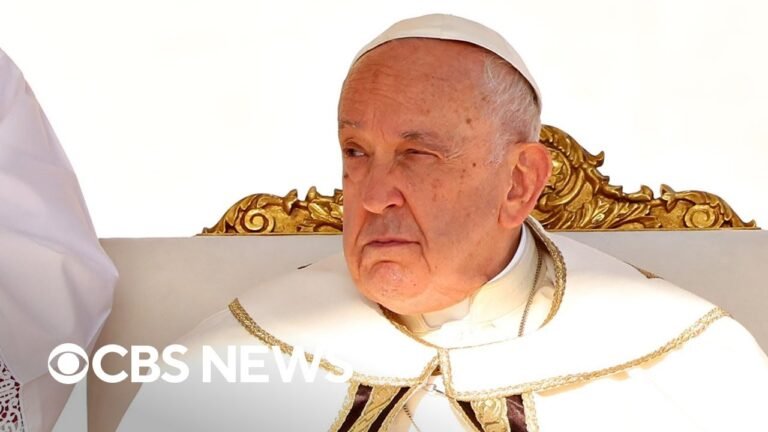Global Distribution of Roman Catholic Population
As the world’s largest Christian denomination, Roman Catholicism boasts a vibrant and diverse community that spans the globe. With over 1.3 billion adherents, the influence of Roman Catholic numbers worldwide is profound, shaping cultures, societies, and moral frameworks in myriad ways. This article delves into the demographics, trends, and factors contributing to the growth and challenges faced by the Catholic Church, offering a comprehensive look at its role in the contemporary world.
How many Roman Catholics are there globally?
As of 2023, there are approximately 1.3 billion Roman Catholics worldwide.
- The Roman Catholic Church has approximately 1.3 billion adherents worldwide, making it the largest Christian denomination.
- The largest populations of Roman Catholics are found in countries like Brazil, Mexico, the Philippines, and the United States.
- The Church has seen growth in regions such as Africa and Asia, while experiencing declines in Europe and North America.
- Roman Catholic numbers are influenced by factors such as birth rates, conversion rates, and socio-political changes in various countries.
- The Vatican conducts regular censuses to track the number of Catholics globally, providing insights into demographic trends and shifts within the Church.
Which country has the highest population of Catholics worldwide?
Brazil stands as the country with the largest Catholic population in the world, boasting an impressive number of adherents. With estimates suggesting that at least 123 million people identify as Catholic, recent data indicates this figure may have climbed to 140 million or more. This substantial demographic highlights the deep-rooted presence of Catholicism in Brazilian culture and society.
The influence of Catholicism in Brazil extends beyond mere numbers; it plays a pivotal role in shaping the nation’s traditions, festivals, and community life. Major events such as Carnival and various religious celebrations reflect the vibrant blend of faith and culture, drawing millions of participants and reinforcing the strong communal ties among Catholics. This rich tapestry of religious expression showcases the importance of Catholicism in Brazilian identity.
Moreover, the Catholic Church in Brazil is actively involved in social issues, advocating for justice, education, and health care. Through various outreach programs and initiatives, the Church seeks to address the needs of marginalized populations, emphasizing its commitment to social responsibility. As Brazil continues to navigate the complexities of modern society, the Catholic Church remains a significant force for both spiritual guidance and social change.
What is the total number of Roman Catholics around the globe?
As of recent estimates, the global Catholic population stands at approximately 1.375 billion, reflecting a notable increase of 16.24 million since the end of 2020. This growth spans across all continents, showcasing the faith’s expanding reach, although Europe is an exception to this upward trend.
Is Catholicism experiencing growth or decline?
Catholicism continues to show signs of growth on a global scale, with the number of baptized Catholics rising from 1.376 billion in 2021 to 1.390 billion in 2022. This increase of 1.0% reflects a modest yet noteworthy trend in the faith’s outreach and influence, particularly in regions where the Church has been actively engaging communities.
This rise in membership highlights the resilience of Catholicism amid various social and cultural challenges. While some areas may face declines, the overall global increase suggests a sustained interest in the teachings and traditions of the Church, reinforcing its role as a significant spiritual and cultural force in the lives of millions around the world.
Exploring the Reach: Roman Catholic Communities Worldwide
The Roman Catholic Church stands as one of the largest and most influential religious institutions globally, with over a billion adherents spanning every continent. From the bustling streets of Manila to the serene landscapes of Tuscany, Catholic communities thrive in diverse cultural contexts, each fostering a unique blend of tradition and modernity. These communities not only serve as spiritual homes for their members but also play a pivotal role in local social and charitable initiatives, addressing issues such as poverty, education, and healthcare.
In regions like Latin America, Catholicism is deeply intertwined with local customs, resulting in vibrant celebrations and practices that reflect both faith and heritage. Events such as Carnival in Brazil or the Day of the Dead in Mexico showcase the Church’s ability to adapt and resonate within various cultural frameworks. Additionally, the commitment to social justice and community service remains a cornerstone of Catholic identity, empowering congregations to engage with the pressing challenges faced by their societies.
As the world becomes increasingly interconnected, the Roman Catholic Church continues to explore new avenues for outreach and engagement. Digital platforms and social media have emerged as vital tools for connecting with younger generations, allowing for a revitalization of faith practices and shared experiences across borders. Through this global dialogue, Catholic communities are not only preserving their rich traditions but also fostering a dynamic faith that resonates with contemporary issues, ensuring their relevance in an ever-changing world.
Mapping Faith: The Roman Catholic Presence Across Continents
The Roman Catholic Church stands as one of the most influential religious institutions in the world, with a presence that spans every continent. From the vibrant parishes in Latin America to the growing communities in Africa and Asia, the Church has adapted to diverse cultures while maintaining its core teachings. This global reach not only reflects the universal nature of Catholicism but also highlights the Church’s commitment to social justice, education, and community development, making it a source of hope and support for millions.
In regions where poverty and conflict persist, the Roman Catholic Church often emerges as a beacon of resilience. Through initiatives that address humanitarian needs and promote peace, the Church fosters a spirit of solidarity among its followers. As it navigates the complexities of modern society, the Catholic presence continues to evolve, embracing dialogue and collaboration with other faiths. This dynamic engagement not only enriches local communities but also strengthens the Church’s mission of spreading love and compassion across borders.
A Global Overview: Distribution Patterns of Roman Catholics
The global distribution of Roman Catholics reveals a vibrant tapestry of faith that spans continents and cultures. With over a billion adherents, the Church’s presence is most pronounced in regions such as Latin America, where countries like Brazil and Mexico boast the largest populations of Catholics. This deep-rooted connection to the faith influences not only spiritual practices but also social and cultural dynamics, shaping communities in significant ways.
In Europe, the historical heart of Catholicism, nations such as Italy and Poland maintain strong ties to the Church, though secular trends are increasingly evident. The decline in regular attendance and the rise of non-religious identities pose challenges for the Church in these regions. Conversely, Africa and parts of Asia are witnessing a remarkable growth in Catholic populations, driven by vibrant evangelization efforts and a youthful demographic eager to embrace spiritual teachings.
The future of Roman Catholicism is marked by both opportunity and complexity. As the Church navigates the challenges of modernization and cultural shifts, it also has the potential to foster greater unity among its diverse followers. Engaging with the unique challenges faced by different regions will be imprescindible in sustaining its global mission, promoting a message of hope and solidarity that resonates across varied landscapes.
Faith Without Borders: Understanding Catholic Population Dynamics
In an increasingly interconnected world, the Catholic population is experiencing dynamic shifts that reflect broader social, cultural, and economic changes. As migration patterns evolve and urbanization accelerates, the faithful are finding new homes across diverse landscapes, enriching local communities with their traditions and values. This global movement not only highlights the adaptability and resilience of the Church but also underscores the importance of fostering dialogue and understanding among different cultures. By embracing these transformations, the Catholic community can enhance its mission of love and service, bridging gaps and building solidarity that transcends geographical boundaries.
The Catholic World: Insights into Global Demographics
The Catholic Church stands as one of the largest religious institutions in the world, with over a billion adherents spread across diverse cultures and continents. This vast demographic encompasses a rich tapestry of traditions and practices, reflecting local customs while adhering to the core tenets of Catholicism. From the bustling cities of Latin America to the serene villages of Africa, the Church’s influence is palpable and continues to shape social values, education, and community life.
In recent years, the Catholic population has seen significant growth in regions like Africa and Asia, where vibrant communities are emerging and expanding. This demographic shift presents both challenges and opportunities for the Church, as it seeks to engage younger generations and address contemporary issues such as poverty, migration, and climate change. The increase in membership in these regions highlights a dynamic and evolving faith experience, marked by a blend of traditional beliefs and modern interpretations.
As the Catholic Church navigates this changing landscape, its commitment to social justice and humanitarian efforts remains a cornerstone of its mission. Initiatives aimed at promoting peace, education, and healthcare resonate strongly within communities, fostering a sense of unity and purpose among believers. The Church’s ability to adapt to and embrace the complexities of global demographics will be imprescindible in ensuring its relevance and impact in the years to come.
The influence of Roman Catholicism continues to resonate across the globe, with its numbers reflecting a diverse tapestry of faith and community. From bustling urban centers to remote villages, the Church plays a pivotal role in shaping cultural values and providing support to millions. As the faithful navigate modern challenges, the enduring strength of their beliefs showcases not only the resilience of tradition but also the potential for growth and unity in an increasingly interconnected world.







